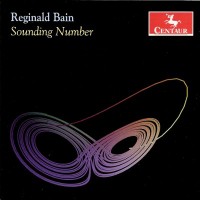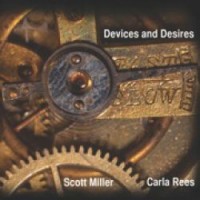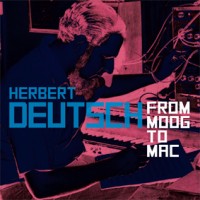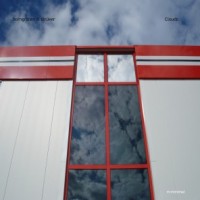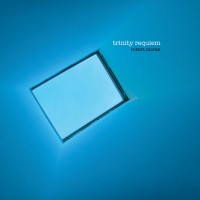EA Bucket 16.
|
Grant Chu Covell [February 2013.] “A Hand for Holmboe.” Katrine RING: Var. comps. Vagn HOLMBOE: Var. movements from Chamber Concertos Nos. 1, 2, 4, 6, 7, 8, 9. Danish National Chamber Orchestra, Hannu Koivula (cond.). Dacapo 8.226569 (2 CDs) (http://www.dacapo-records.dk/). Ring appropriates snippets from Vagn Holmboe’s Chamber Concertos the original movements of which are provided as a bonus CD. Passing across the originals suggests that Ring has found pearls in emphasizing the quartal, Bartók-like aspects of Holmboe’s language. Ring’s toolset includes small and large repetitions, and while her deconstructions employ dance-floor techniques, the results steer towards minimalism, especially given the tidbits’ harmony. I hear a good deal of melancholy. She admits extraneous material such as laughter, coughing, electric guitar, and for the two Vagn and Gunnar Smoking Pipes, the sound of matches rattling in a box (Gunnar refers to compatriot Gunnar Berg). While some will argue Holmboe needs no updating, his cranky neoclassical Bartók/Martinů style (the nine concertos were written between 1939-56) wouldn’t otherwise warrant re-examination. “Islas.” Juan Sebastián LACH LAU: Pantaleón (2005)1; ‘round ruby (2004)2; rzw / Continuidad Paralela (2002, rev. 2010)3; γenealoπaedie (2003)4; Chamba de um acorde (2011)5; Blank Space (2009)6. The Electric Hammer1: Diego Espinosa (perc.), Juan Parra, Henry Vega (computers); Moravian Philharmonic Chamber Players2,4, Jan Kučera2, Vit Micka4 (conds.); Salvatore Novello3 (perc.); Ensemble 35: Salvador Torre (fl), Fernando Dominuez (b-clar), Maruicio Nader (pno); Daniel Pastene6 (clar), Gabi Sultana6 (pno). Navona NV5894 (1 enhanced-CD) (http://www.navonarecords.com/). A fine, effortless integration of live and electronics, Pantaleón blends modernist drum-set filigree with a briskly tasteful anthology of synthesizer history. Displaying bolder transformations, rzw / Continuidad Paralela ploughs a similar furrow. γenealoπaedie’s title nearly gives away the game. Lach Lau applied computer analysis to Satie’s original. Starting as a pointillist microtonal essay, its source yields gently towards the finish. The 4:20 length warrants a replay to catch the tune again. Chamba de um acorde also suggests something being worked out with unsynchronized voices and repeating scales. Blank Space begins as a conventional clarinet-plus-piano duo; the encroaching tape with disconcerting texts quickly distorts that reality. A homage to Thelonious Monk, ‘round ruby would otherwise represent one of those harmless American ensemble works had I not found its curtain-raising gesture something of a caricature. Perhaps I’m endowing the music with more cleverness than it’s earned. Given other works in this collection charting different paths, this “conventional” ensemble displays a less inventive personality. Islas presents several unconnected islands in Lach Lau’s universe. We would welcome a large land mass. “Sounding Number.” Reginald BAIN: Var comps. Centaur CRC 3089 (1 CD) (http://www.centaurrecords.com/). Complex equations lurk beneath Bain’s duration, pitch and form, schemes that become evident in The Music of the Primes and Pi Day. Generally, these are short works. The multi-movement God Does Not Play Dice and The Language of the Angels, and the longest single piece, Strange Attractors & Logarithmic Spirals, do not exceed ten minutes. Bain has created attractive bonsais. It would interest to see whether he can nurture a full-scale tree. “Devices and Desires.” Carla REES, Scott MILLER: Var comps. rarescale records rr004 (1 CD) (http://rarescale.org.uk/section641373.html). Wary of flute-plus-electronics, I explored this release with caution. Fortunately we pass quickly into imaginative textures which nicely transform Rees’ quarter-tone C flute. Release notes inform that five of the six tracks capture structured or free improvisations, sometimes employing material recorded well before these 2011 sessions. To my ear, Miller recreates a prior age via ring modulation and timbres reflecting earlier synthesizers. Indeed one piece’s title, Omaggio a 1961, homages Berio. Improvised track Seriously, This is a Commitment stands out with what sounds like elegantly deployed delayed effects. “From Moog to Mac.” Herbert DEUTSCH: A Christmas Carol (1963); Jazz Images, A Worksong and Blues (1964); A Little Night Music, The Ithaca Journal, Aug. 6, 1965 (1965); Prologue to King Richard III (1971); Sleight of Hand (Mr. Magic Man) (1989); Abyss (1994); Fantasy on “Sometimes I Feel Like a Motherless Child” (1995); Two Songs without Words (2007). Robert MOOG: The Abominatron (1964). Var. perfs. Ravello Records RR7846 (1 CD) (http://www.ravellorecords.com/). Deutsch was the man behind Robert Moog’s synthesizer, nudging, pushing, and stretching the semi-portable electronic instrument’s capabilities into patterns and capabilities that working musicians might actually use and find inspiring. This disc collects works ranging from A Christmas Carol, a pre-synthesizer ea collage, Jazz Images, which puts Deutsch multi-tracked at trumpet and piano, A Little Night Music which blends bleeping synth with chosen newspaper phrases, and a bit of pop, Sleight of Hand. Overall, Deutsch is immensely versatile and inventive, if not downright macabre. Abyss might fall closer into the contemporary art-song genre. The two Songs without Words are presented here for theremin and piano. Moog’s recorded letter to Deutsch about the gadgetry makes for a special feature. “Clouds.” Borngräber & Strüver: Var comps. m=minmal mm-015cd (1 CD) (http://www.m-minimal.com/). Think of a world where everyone dresses in black, is coolly caffeinated, and reverb makes everything A-OK. I suspect that Borngräber and Strüver keep busy with more aggressively pulsed and synthesized offerings than the present disc’s minor-key playing to the art-school balcony. Wellen suggests a needle stuck in the groove of a Requiem, perhaps a few precious bars stolen from a longer work (strings, voice, winds) sampled, looped and layered. Mobile’s few pizzicato plucks succumb to the same laminations. If Strauss’ Don Quixote figures in, I missed it. Secret Bells noodles with processed piano and ambient noise. The three-part title work might be for real instruments processed in a studio, or may be an elaborate stew marinating in sad reverb. Wellen and Mobile’s minimal gestures sustained most interest. Robert MORAN: Trinity Requiem (2011)1; Seven Sounds Unseen (1992)2; Notturno in Weiss (2006)3. Philip BLACKBURN: Requiem for a Requiem (2011). Trinity Youth Chorus and Members of Trinity Choir1, Robert Ridgell1 (cond.), Musica Sacra2, Richard Westenburg2 (cond.), The Esoterics3, Eric Banks3 (cond.). Innova 244 (1 CD) (http://www.innova.mu/). The imp of perversity persuades me to mention this release within an ea context rather than among its choral kin. I rarely suffer contemporary choral music gladly: in roughly equal measure, dissatisfaction with texts, settings and the entire performance aura. To cap an hour of Moran’s choral works, composer and Innova director Blackburn includes a seven-minute distillate of this and other Innova Moran recordings. Blackburn nicely culls the emotional essence of the disc’s Trinity Requiem, an eloquent statement for children’s chorus, organ, harp and four cellos marking the 10th anniversary of September 11, 2001. Recorded at Trinity Church on Wall Street in NY, the Requiem captures environmental sound and, most startlingly, a police siren at the Offertory’s opening which borrows from that acme of clichés, Pachelbel’s Canon. I imagine this was a difficult recording to capture given inherent balance issues between sustaining chorus, organ, transient harp and cellos within a reverberant space. Moran’s tonal music displays odd artifacts suggesting electronic manipulation or capricious microphone placement. Such curiosities do not distract from the music’s impact; however, I would not be at all surprised if other ensembles – I expect Requiem to become a favorite – make the work sound a good deal different.
[More EA Bucket, Grant Chu Covell]
[More
Bain, Blackburn, Borngräber & Strüver, H Deutsch, Holmboe, Lach Lau, Moran, Rees, Ring, S Miller]
[Previous Article:
Maestro di Suoni e Silenzi: Necessary Nono 3.]
[Next Article:
Scardanelli’s February Motley]
|


